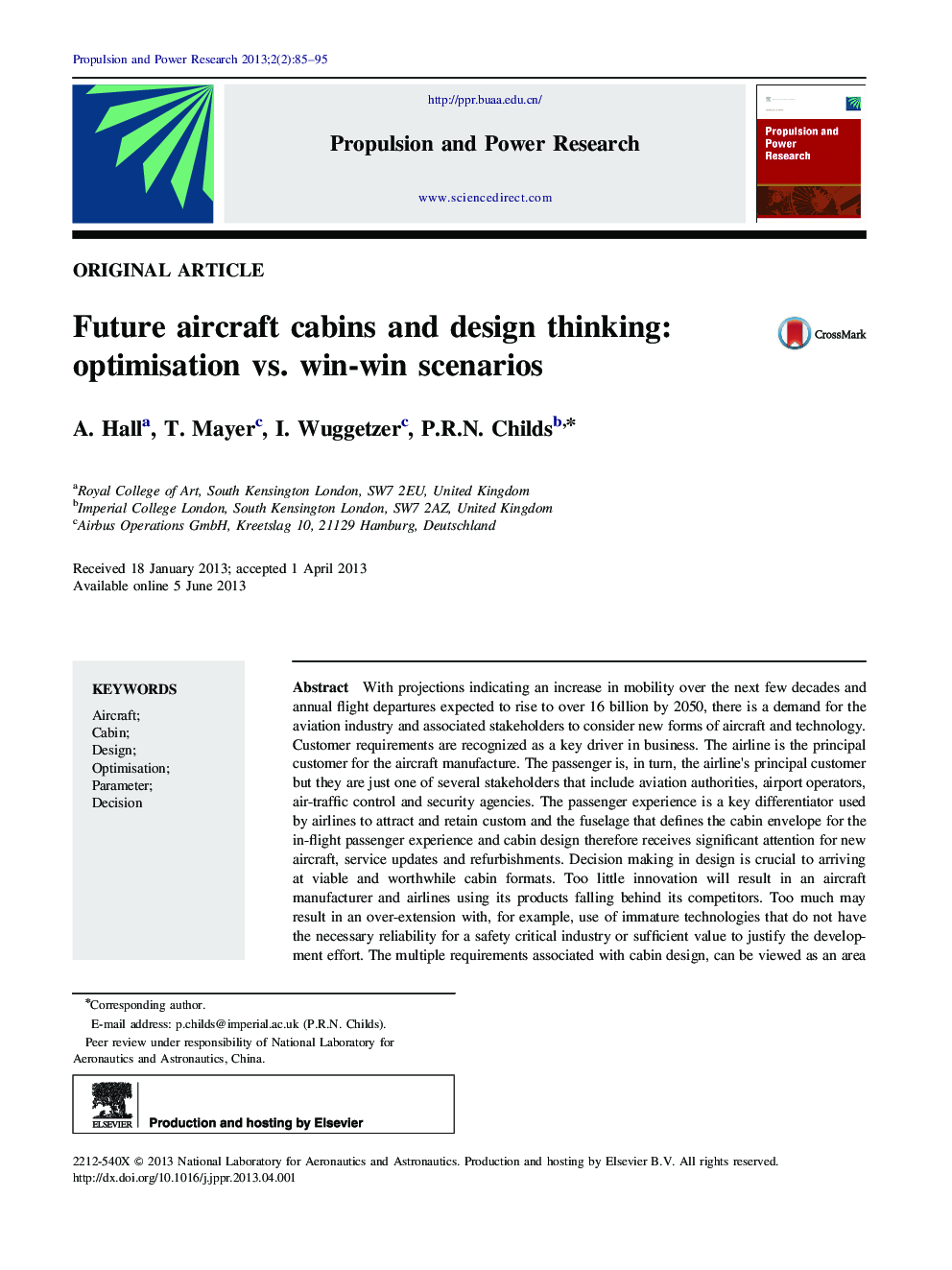| Article ID | Journal | Published Year | Pages | File Type |
|---|---|---|---|---|
| 1719671 | Propulsion and Power Research | 2013 | 11 Pages |
With projections indicating an increase in mobility over the next few decades and annual flight departures expected to rise to over 16 billion by 2050, there is a demand for the aviation industry and associated stakeholders to consider new forms of aircraft and technology. Customer requirements are recognized as a key driver in business. The airline is the principal customer for the aircraft manufacture. The passenger is, in turn, the airline's principal customer but they are just one of several stakeholders that include aviation authorities, airport operators, air-traffic control and security agencies. The passenger experience is a key differentiator used by airlines to attract and retain custom and the fuselage that defines the cabin envelope for the in-flight passenger experience and cabin design therefore receives significant attention for new aircraft, service updates and refurbishments. Decision making in design is crucial to arriving at viable and worthwhile cabin formats. Too little innovation will result in an aircraft manufacturer and airlines using its products falling behind its competitors. Too much may result in an over-extension with, for example, use of immature technologies that do not have the necessary reliability for a safety critical industry or sufficient value to justify the development effort. The multiple requirements associated with cabin design, can be viewed as an area for optimisation, accepting trade-offs between the various parameters. Good design, however, is often defined as developing a concept that resolves the contradictions and takes the solution towards a win-win scenario. Indeed our understanding and practice of design allows for behaviors that enhance design thinking through divergence and convergence, the use of abductive reasoning, experimentation and systems thinking. This paper explores and defines the challenges of designing the aircraft cabin of the future that will deliver on the multiple requirements using experiences from the A350 XWB and future cabin design concepts. In particular the paper explores the value of implementing design thinking insights in engineering practice and discusses the relative merits of decisions based on optimisation versus win-win scenarios for aircraft cabin design and wider applications in aerospace environments. The increasing densification of technological opportunities and shifting consumer demand coupled with highly complex systems may ultimately challenge our ability to make decisions based on optimisation balances. From an engineering design perspective optimisation tends to preclude certain strategies that deliver high quality results in consumer scenarios whereas win-win solutions may face challenges in complex technical environments.
